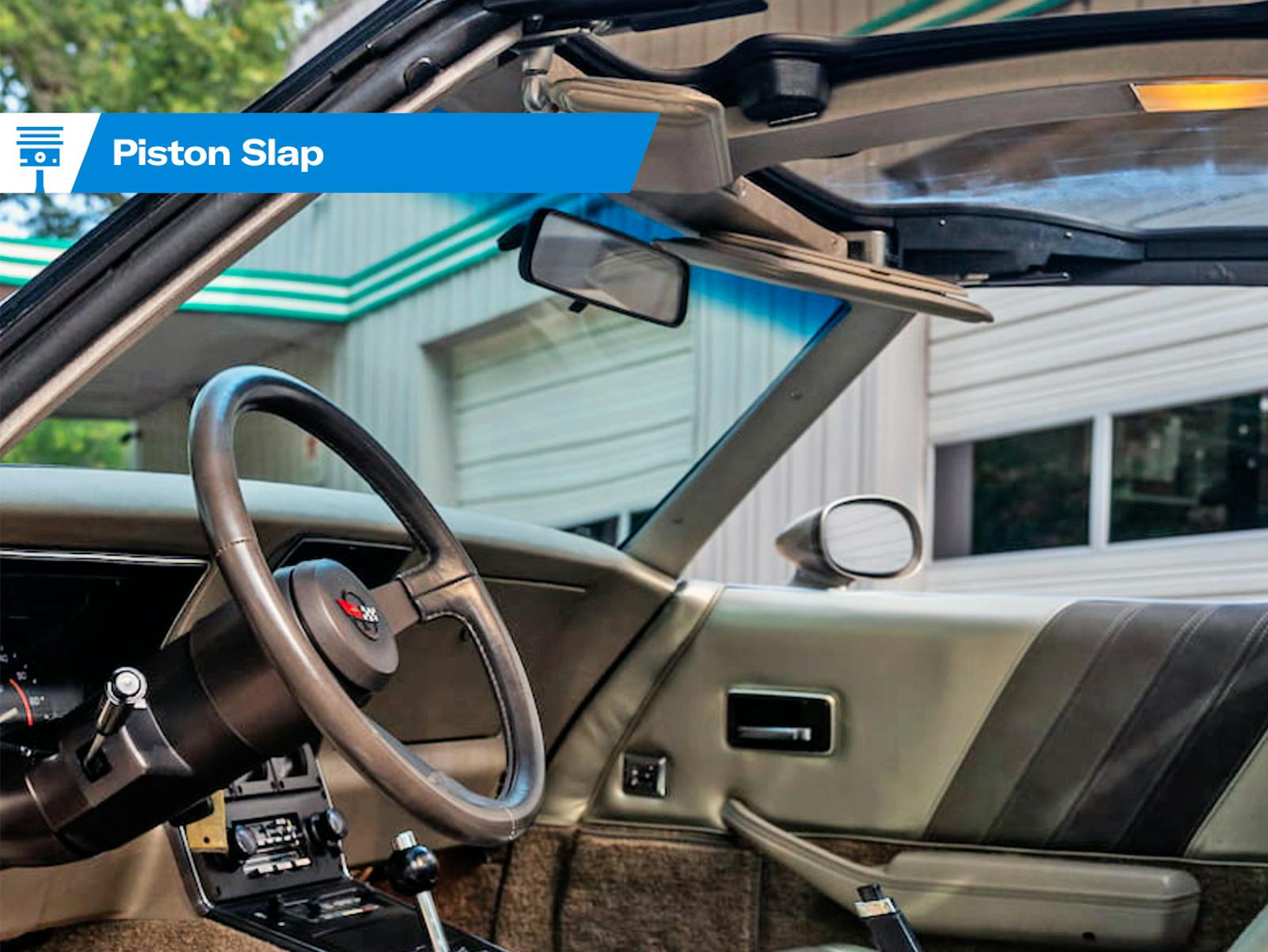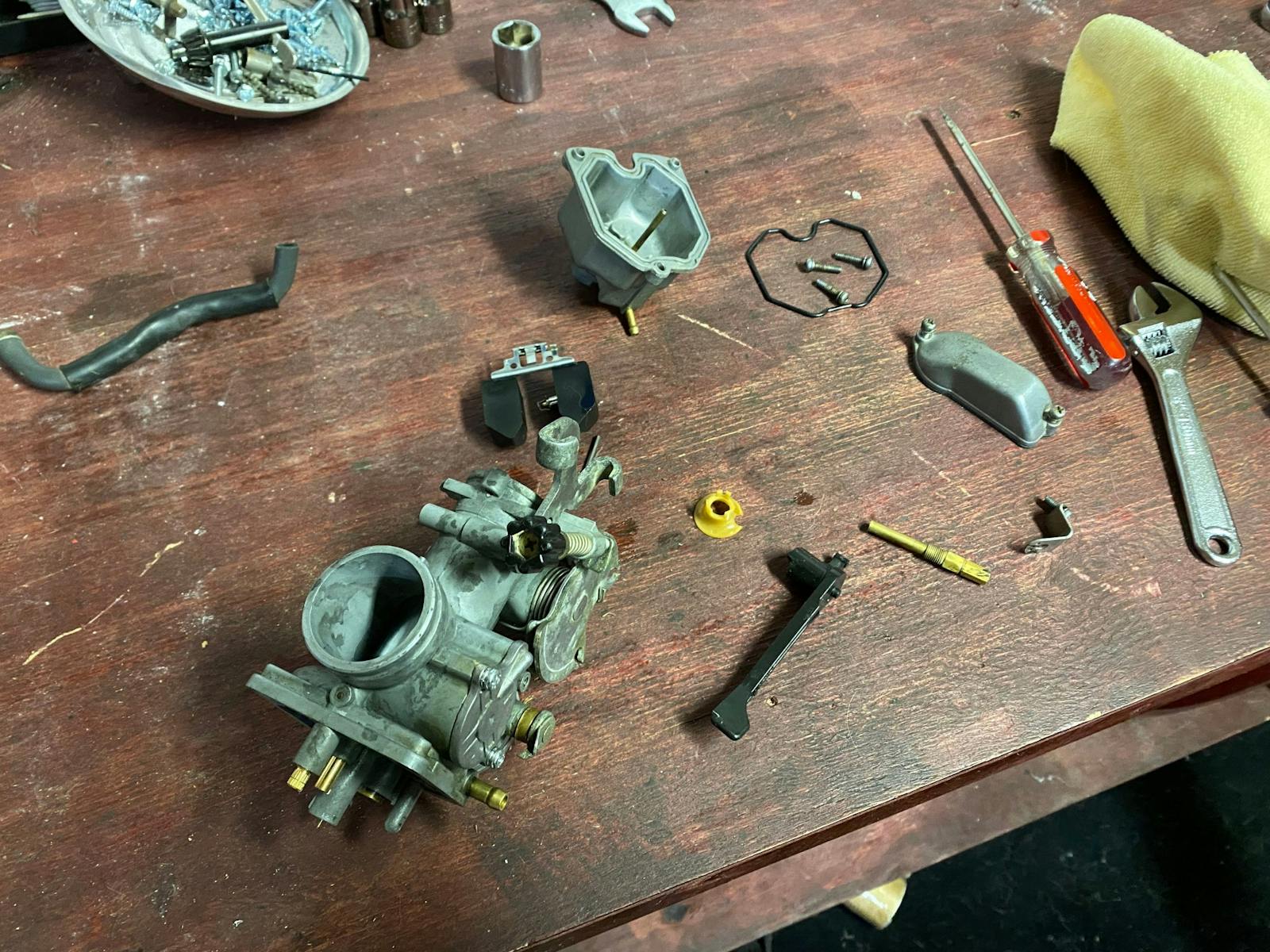5 Steps to Bring Your Car out of Storage
It’s that time of year again! This article was originally published in 2020, and we’re bringing it back this year to encourage ourselves—and you—to get our treasured cars back on the road with love and care. —Ed.
The snow mounds are receding and the mercury is beginning to rise for much of the U.S., which means that many gearheads are eyeballing their currently tucked-away vintage rides. If you are giddy with anticipation about driving that long-stored vehicle, here are five steps to follow to get your next driving season started off smoothly.
Step #1: Inspect
20180320201127)
Even if you put the car away properly, and kept an eye on it over winter, the first thing you should do is go over it with a keen eye. Grab your favorite flashlight (everyone has one, right?) and examine each nook and cranny of your car—bumper to bumper and roofline to contact patch.
Keep an eye out for cracks, evidence of leaks, worn-out bushings, or wiring that needs attention. Despite your best efforts, you might have to evict a rodent. Now is the time, however, before you tear off on the first, triumphant drive and a nest dislodges, causing even more damage. Meticulously taking stock of the car each year is a great way to ensure that deteriorating parts do not cause additional damage.
The most important system to inspect right now is the brakes. I start with a hard/harder test at the pedal. Sit in the driver’s seat and press the brake pedal as if you were coming to a normal stop, and hold the pedal down for 10 seconds or so after the pedal stops moving. Now press even harder on the pedal—more akin to a panic stop—and hold pressure again. The pedal should stay rock solid, not slowly move towards the floor. After this test, inspect the brake system once more, looking for leaks or signs of fluid escaping the system. This is a pass-or-fail exam; now is the time to find any issues, not on the open street.
Step #2: Clean
20180320202414)
Even in storage, dirt and grime accumulate on your beloved ride. Take the time to remove all this damaging debris from both painted and soft surfaces. We have talked about good detailing technique before, and we will always recommend keeping both the interior and exterior of your ride clean.
You can perform this step at the same time as the inspection, but I prefer to keep the tasks separate so I don’t lose my mechanically oriented concentration amid a mist of quick detailer. Treat rubber weather stripping to keep the sealing intact, therefore allowing less dust inside the interior (unless you prefer to go topless). Interior fabrics should get a protectant to start the season off right and make for easier cleaning later on, when you would rather be driving or showing than detailing.
Step #3: Prepare to Start
20180320201420)
20180320201654)
20180320201753)
20180320202031)
That’s right, we’re slicing this process pretty thin. However, even when properly stored, a dormant engine can benefit from a slow awakening. Ensuring components are ready to move again will go a long way to ensuring your engine has not only a good driving season but a long, healthy life.
Engines drain oil from top to bottom, and after sitting all season there is likely very little—if any—oil at the top end of the engine. If you have the ability and confidence to spin the oil pump before cranking the engine with the start, do that. If not, grab an oil can, remove the valve covers, and oil the top end. This won’t get the main bearings, but it is better than nothing.
Hopefully, your inspection told you that the fuel lines were in good shape (if they weren’t, replace them and come back to this step) so it’s time to get fuel pressure in the system. Be prepared for anything at this point, especially if you stored the car filled with fuel that has ethanol blended into it. An electric fuel pump is great for these situations, since you can pressurize the system rather than cranking the engine for a bit.
If you don’t have an electric pump, disconnect the ignition by pulling the coil wire to the distributor and crank the engine till you see oil and fuel pressures. You’ll know that fuel pressure is adequate on a carbureted engine if the accelerator pump squirts fuel into the intake when the throttle is opened by hand. Replace the coil wire once this process is complete.
Step #4: Start
20180320205502)
Now the fun part. While it pales in comparison to starting a rebuilt engine for the first time, starting your vintage car for the first time of the season is the pick-me-up most of us could use right now.
A few pumps of the accelerator on a carbureted engine will get some raw fuel in the intake manifold to make starting a bit easier. Fuel-injected engines will only need a turn of the key. Once running, let the engine idle for a few minutes as you look around the engine compartment for any leaks and listen for strange noises. Diagnose anything you find right away.
Step #5: Go for a Short Drive
20180314140508)
You finally made it to the part you have been waiting for this whole time. Put the car in gear and start slowly—a trip around the block or down the street, for example. Pay attention to any noises or vibrations that seem out of the ordinary. Investigate accordingly.
Just like that, you are on the path to another great season of driving. Keep up on the maintenance on your classic and you will be rewarded with miles of enjoyment. Is there an extra step you like to take with your car? Post it in the comments below; you might help another gearhead. For now, though, get out in the garage and get your car ready to cruise at a moment’s notice.
***
Check out the Hagerty Media homepage so you don’t miss a single story, or better yet, bookmark it. To get our best stories delivered right to your inbox, subscribe to our newsletters.


OVER THOUGHT, REMOVING THE VALVE COVERS ?? , SPINNING THE OIL PUMP ???? MAYBE IF IT SAT A LOT LONGER THAN OVER THE WITER . I STOER WITH A QUARTER TANK OR LESS WITH ETHANOL FREE FUEL , FILL UP IN SPRING WITH FRESS FUEL.. NEVER HAVE HAD AN ISSUE , NEVER LEFT WITH A TANK CRAP FUEL
Where do you get ethanol free gas . Not available in Canada .
95 Chevron is ethanol free, at least here in BC.
These are really helpful tips. I’m brand new at this. My more experienced gearhead friends tell me to start it up every three weeks or month, which I’ve been doing, and run it till it’s good and hot. Maybe half an hour. Thanks for the good ideas.
Really good ideas
If your Mopar has an automatic trans and has been in winter storage, start it the first time in “neutral”. It will circulate fluid up through the trans, and fill the convertor.
I agree. Then slowly move the shifter thru all the gears a few times. You’ll know when she’s ready to go.
Check your spare tire. Odds are you forget about it most of the time. I checked mine one day and it had a minor blow out. Granted it was old and had not been used in quite awhile but still they fall apart over time.
Hi Folks. ..
All of you guys out there have good ideas. Your methods of checking your car and making her ready for a new season of enjoyment reflect your years (or months) of experience and knowledge. Granted that some folk have more experience than others and that shows in the details. The folk that read this column are probably more experienced than those that don’t. Ultimately, we must remember that there is a need to take care of both our cars and ourselves as we age. We do that based again on our experience and knowledge. . . Oh dear. . . I ramble on, don’t I . . . Happy St Patricks Day to all ! ! Anybody put green dye into the gas tank? 😂
Don’t fret about rambling – there are plenty of us that do (not ME of course 😜) – but the thing I noticed in your comment is that you stayed positive and polite. If you’re going to post like that, I say Ramble On, Man!
Link to the good detaing techique seems to be broke?
Oops I will repost that!
The link for the good detailing technique seems to be broken;
https://www.hagerty.com/articles-videos/articles/2018/03/20/how-to-spring-clean-your-car-after-winter-storage
To Terry from Canada:
Find your way to a Shell gas station and purchase their Premium fuel. No ethanol Bud !
I don’t need to worry about winter storage as it never gets that cold in Australia. I can understand not driving your classic for the winter months in very cold climates with salted roads etc… I don’t follow why you wouldn’t just start your car once a week, let it run for 15 minutes, drive it up and down the driveway so as you don’t flat spot your tyres, operate the various systems to keep them working. I wouldn’t just lay it up and let it sit unused for months on end.
Lots of people in the northern U.S. who have vintage cars in winter storage move to Arizona during the cold months, so they can’t be there to do what you suggest! 😂😂😂
I also check my tire pressure and brakes fluid level after a few pumps on the brake pedal, just to make sure there are no cylinder leaks (master and wheel).
Don’t forget to check the cabin air filter. I bought a one owner C6 Vette in pristine shape. Found a mouse nest packed inlet side. Also use Shell premium. Called Nitro in Pa.
Thanks guys
My 911 turns 50 this season!!!